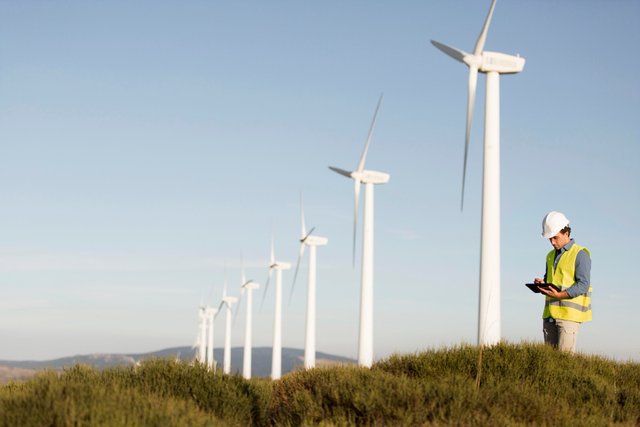The Environmental Impact of Blockchain Technology

Introduction
In many industries, a completely new way of managing and recording digital transactions via Blochchain technology has been increasingly implemented. Hence, this technology became widely popular, and its most famous application is Bitcoin. However, it is worth noting that this technology has a certain cost to the environment and, in particular, to the carbon footprint. In this article, we will discuss these environmental concerns and then look at what strategies can be adopted to reduce the carbon footprint.
Environmental Impact of Blockchain Technology in Terms of Carbon Footprint
The data stored in the blockchain is distributed ledgers, which exist on every computer in the network. This is called 'mining'. Mining is a process of calculation and validation of new transactions in order to include them with the ledger. This necessitates extensive computational capacity.
The environmental problem is that a technology of blockchain, Bitcoin mining, generates so much power that the total of CO2 emissions is also enormous. According to one estimate, Bitcoin mining consumes as much electricity each year as some countries use in an entire year.
However, as most electricity is still produced with coal, the carbon footprint of Bitcoin, the most prominent cryptocurrency, is immense. And if you look from the energy point of view, for each bitcoin transaction, a lot of carbon dioxide gets into the atmosphere. So yeah, it’s also a problem from an ecological point of view too.
Energy Consumption in Proof-of-Work Mining
For every transaction that is performed on a blockchain, a miner must solve a kind of mathematical problem that it solves for a transaction to be verified onto the blockchain. The miner or group first to solve the puzzle attaches the block to the chain. Additionally, the miner is awarded some amount of coins in its cryptocurrency. These puzzles are not easy, and to solve them, miners use high computational power (or machinery). These computers are called 'mining rigs'.
These mining rigs run non-stop, sometimes for weeks or months, without a break. Each rig consumes a lot of electricity. And when millions of miners globally are doing this activity, imagine how much energy that must be consumed.

Furthermore, competition makes mining via PoW so energy-intensive. The more people are trying to mine, the harder the puzzles get to mine a block. Indeed, the difficulty is adjusted automatically so that there is only one block mined on average every ten minutes. In turn, to mine such complex puzzles in an ongoing race, miners keep purchasing a more and more powerful rigs that require even more energy to operate.
Shifting Blockchain Towards More Energy-efficient Proof-of-Stake Consensus Mechanisms
To mitigate such impacts on the environment, the industry is trying to switch to more energy-efficient methods, which also appears to be possible. One of them is Proof-of-Stake. So, lets see what efforts are being made to implement this? How much less energy does it use than PoW?
In PoS, cryptocurrency owners 'stake' their coins or tokens as a way to participate in network operations. The principle is that the more coins you have, the more you have to decide on the network. Staking is a process where there is no mining, validators (“miners” in PoW) are chosen at random based on the amount of their staked crypto. The process that is also referred to as ‘forging’ or ‘minting’ takes much less energy than traditional mining does.
Indeed, the most popular projects in the industry are already moving in this direction. In 2018, the world’s second-largest cryptocurrency Ethereum announced that it had phased out the PoW system in favor of PoS in the new upgrade–“Ethereum 2.0”. This switch has reduced the energy consumption of the new platform by as much as 99% than its predecessor.
Governments and regulatory bodies are also taking steps to promote the sustainable use of blockchain technology. Some countries like China have placed restrictions on mining operations, partially due to the high energy consumption involved. This indirectly promotes more energy-efficient blockchain practices.
Strategies to Improve Energy Efficiency of Blockchain Mining Operations
Currently, various techniques and methodologies are actively tested and implemented in the industry, helping to increase the efficiency and reduce the energy consumption of blockchain mining. Given that, they lead not only to a decrease in the environmental footprint but also to lower operational expenses. These methods are as follows:
Use of Renewable Energy Sources:
One way in which the activity of mining within the blockchain could become more sustainable is if renewable resources, such as wind, solar, or hydroelectric power, were employed. The energy sources are clean, with a significantly lessened carbon footprint from the mining process. This has already been widely adapted by a number of companies and mining operations, especially in regions where renewable energy is cheap and accessible.
Use of Energy-Efficient Hardware:
Replacing mining hardware, which typically has high energy consumption, with more energy-efficient models is a practical step. With new technologies and advancements, manufacturers are now developing hardware that consumes less energy and still delivers effective performance. Miners are encouraged to replace their old rigs with the latest, energy-efficient models.
Heat Recovery Solutions:
Heat recovery solutions can be implemented to prevent heat generated from mining operations from being wasted. For example, in some facilities, heat from mining rigs is used to heat nearby homes or offices, especially in cold regions. In this way energy is dual-used, which improves overall efficiency.
Geographic Distribution:
Geographically distributing mining operations is also a technique that can improve energy efficiency. For example, if mining operations are shifted to colder climates, where cooling costs are naturally lower, or where renewable energy sources are more accessible, overall energy consumption can be significantly reduced.
Conclusion
The mining of bitcoin and other cryptocurrencies using conventional proof-of-work consumes an excessive amount of energy, promotes the emission of whole tons of carbon into the atmosphere, and hastens climate deterioration. Consumers and investors need to opt in for eco-friendly technologies. And with our joint efforts, blockchain technology will be converted to a sustainable and environmentally friendly one.


Note:- ✅
Regards,
@theentertainer
Thank you for the feedback. 😊
PS: Could you please check your Discord? I have sent you a friend request.
Hello, good review about the environmental impact and carbon footprint, how its development will flow in the blockchain, greetings.
Thanks for stopping by. 😊